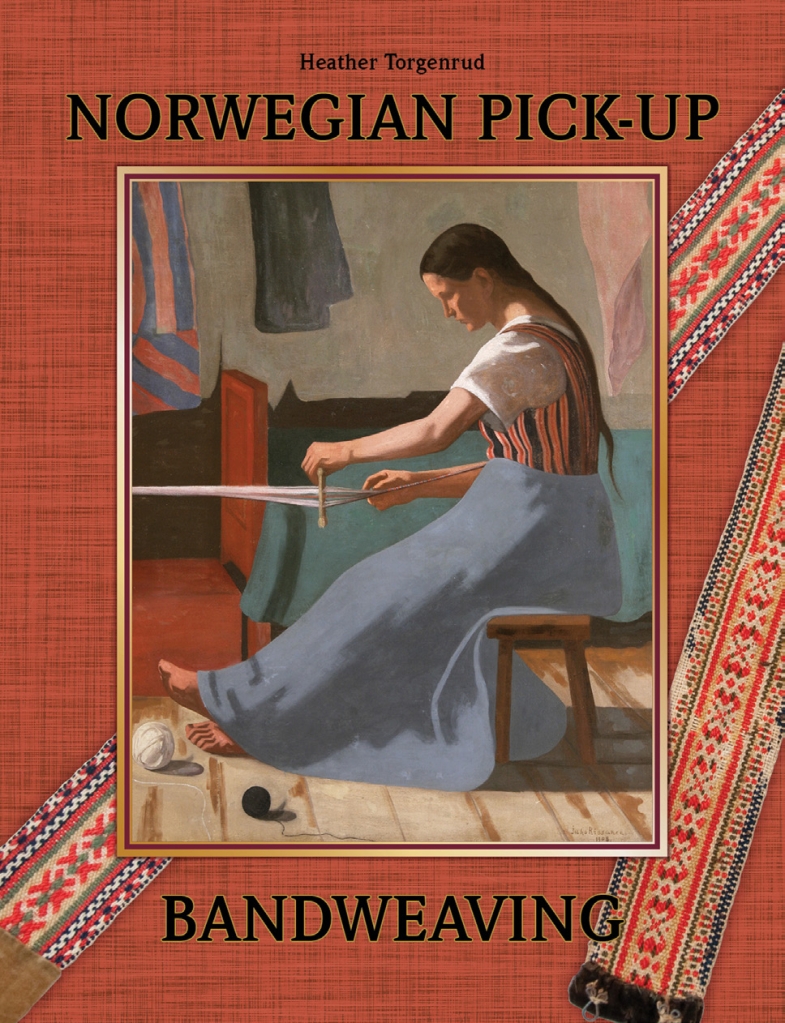I’m excited to announce that my second book will be available on August 28, 2024! It can be pre-ordered from Schiffer Publishing and various booksellers, and you can also ask your favorite weaving shop or bookstore to order it for you. Read the description below or click here to visit the book’s page at Schiffer and see the table of contents and other sample pages.

A pattern and color sourcebook for weavers, featuring 288 brand new patterns for Baltic-style technique and 70 samples unleashing the power of color choices. A lifelong resource for pick-up bandweavers, this pattern and color sourcebook contains 288 new charts that can be mixed and matched creatively, plus photos of 70 woven sample bands that illustrate techniques to help weavers arrange their own colors beautifully. Here you’ll find :
- Designs for exquisite original bands woven in the Baltic-style pick-up technique found in many cultures.
- The tremendous variety that’s possible, even with narrow pick-up patterns that adhere closely to traditional design conventions.
- Practical color approaches specifically related to bandweaving.
- How the band design process works—with insights you can apply to designing your own patterns.
Whether you weave bands on an inkle loom, a Scandinavian band heddle, or even a floor loom, this go-to reference stands the test of time for ideas and inspiration.
My first book is still available at Schiffer Publishing, booksellers, and weaving shops. Read the description below or click here to visit the book’s page at Schiffer and see the table of contents and other sample pages.

For the first time in English, a complete book about Norwegian pick-up bandweaving—from its fascinating history to beautiful bands you can make yourself, with more than 100 pattern charts from bands in museum collections.
- Part 1 tells the story of how these bands were used in the rural communities of 18th and 19th century Norway, as stocking bands, swaddling bands, sending bands, and more.
- Part 2 looks closely at twenty bands brought to America by Norwegian immigrants, and what they tell us about traditional patterns, colors, and materials.
- Part 3 has clear and concise instructions for weaving pick-up on simple, traditional band heddles, and these instructions can also be adapted to other kinds of looms.
Meticulously researched, easy-to-read, and profusely illustrated, this book is destined to become a classic in the field. It will interest not only weavers but anyone who appreciates textile arts, folk costumes, and Norwegian culture.
